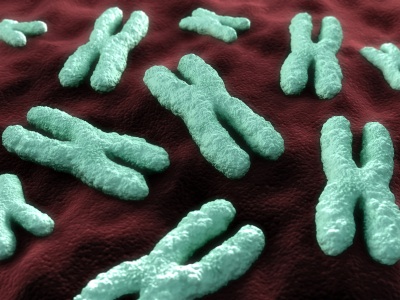Wake up and breathe in the ICU
Mechanically ventilated patients in intensive care units (ICUs) are often heavily sedated. Recent studies have shown that minimizing sedation of these patients shortens their time on the ventilator and in the ICU. There is concern, however, that reducing sedation may adversely affect long-term cognitive, psychological and functional outcomes.
James Jackson, Psy.D., and colleagues assessed these outcomes 3 and 12 months after discharge in 180 patients in the Awakening and Breathing Controlled (ABC) Trial, a multicenter trial in which medical ICU patients were randomized to either a daily “wake up and breathe” protocol (interruption of sedatives paired with a ventilator weaning protocol) or to sedation per usual care along with a ventilator weaning protocol.
The investigators report in the July 15 American Journal of Respiratory and Critical Care Medicine that patients managed with the “wake up and breathe” protocol had similar long-term cognitive, psychological and functional outcomes as patients receiving sedation per usual care. The findings support using a “wake up and breathe” protocol to manage mechanically ventilated ICU patients.
— Leigh MacMillan
Fragile X gene does its own thing
Fragile X syndrome – the most common inherited form of mental retardation and autism disorders – is caused by loss of a single gene function: human fragile X mental retardation 1 (hFMR1). Humans have two other closely related genes, hFXR1 and hFXR2, whose functions have been relatively unexplored. Drosophila have a single FMR1-like gene (dFMR1), and flies that lack this gene show characteristics of Fragile X syndrome at molecular, cellular and behavioral levels.

iStockphoto.com
To explore the roles of the three human Fragile X-related genes, graduate student Lane Coffee, Kendal Broadie, Ph.D., and colleagues expressed each of the genes in targeted tissues in Drosophila lacking dFMR1. They found that only hFMR1 was able to rescue molecular and cellular defects in neurons, comparably in effectiveness to dFMR1. In contrast, all three human genes were able to rescue non-neuronal defects in spermatogenesis and male fecundity.
The findings in the July/August Disease Models & Mechanisms demonstrate that hFMR1 has an evolutionarily conserved neural-specific function that is distinct from its related family members.
— Leigh MacMillan
Remain vigilant for second cancers
Although nearly 80 percent of childhood cancer patients are surviving five years or more after diagnosis, they continue to face ongoing health risks – particularly the development of subsequent cancers.
Debra Friedman, M.D., and colleagues assessed the incidence of subsequent cancers occurring five years or more after initial diagnosis among participants in the Childhood Cancer Survivor Study. They report in the July 21 issue of the Journal of the National Cancer Institute that the risk of developing subsequent cancers increases with age, with survivors of Hodgkin lymphoma at the greatest risk. Increased risk was also seen in female survivors, survivors diagnosed at an older age, and survivors treated with radiation. This risk did not decrease with time.
The findings demonstrate that childhood cancer survivors continue to be at increased risk of subsequent cancers through the second and third decades of life. Because many adult survivors do not appreciate the increased risk related to their childhood cancer diagnosis, continued surveillance and medical follow-up is essential.
— Melissa Marino
Group B strep attacks with skizzle
Streptococcus agalactiae serotype V is an invasive “group B strep” bacterium that causes serious infections in newborns and immune-compromised patients. The mechanisms of group B strep pathogenesis are not fully understood.

iStockphoto.com
Paul Bock, Ph.D., graduate student Karen Wiles, and colleagues have now characterized “skizzle,” a protein secreted by S. agalactiae. Skizzle has moderate sequence identity to bacterial factors from other groups of streptococci that are known to activate human plasminogen and launch a clot-dissolving cascade (fibrinolysis). Activation of this system is thought to degrade materials in the extracellular matrix and allow bacteria to disseminate through soft tissue.
The investigators report in the July 2 Journal of Biological Chemistry that skizzle binds to plasminogen, enhances activation of plasminogen to the fibrinolytic protease plasmin by a factor called urokinase, and increases the rate of clot lysis. The findings support a role for skizzle as a group B strep virulence factor that interacts with the human fibrinolytic system.
— Leigh MacMillan
We welcome suggestions for research to highlight in Aliquots. The items should be primary research articles (no reviews, editorials or commentaries) published within the last two months in a peer-reviewed journal. Please send the article citation (PDF if available) and any other feedback about the column to: aliquots@vanderbilt.edu.
Past Aliquots
June 22, 2012
June 8, 2012
May 11, 2012
April 27, 2012
April 13, 2012
March 30, 2012
March 16, 2012













